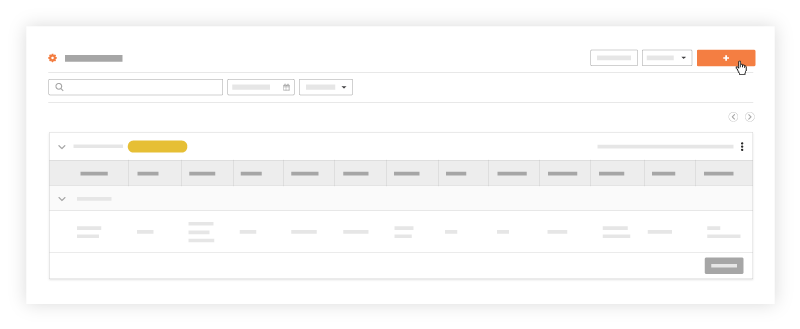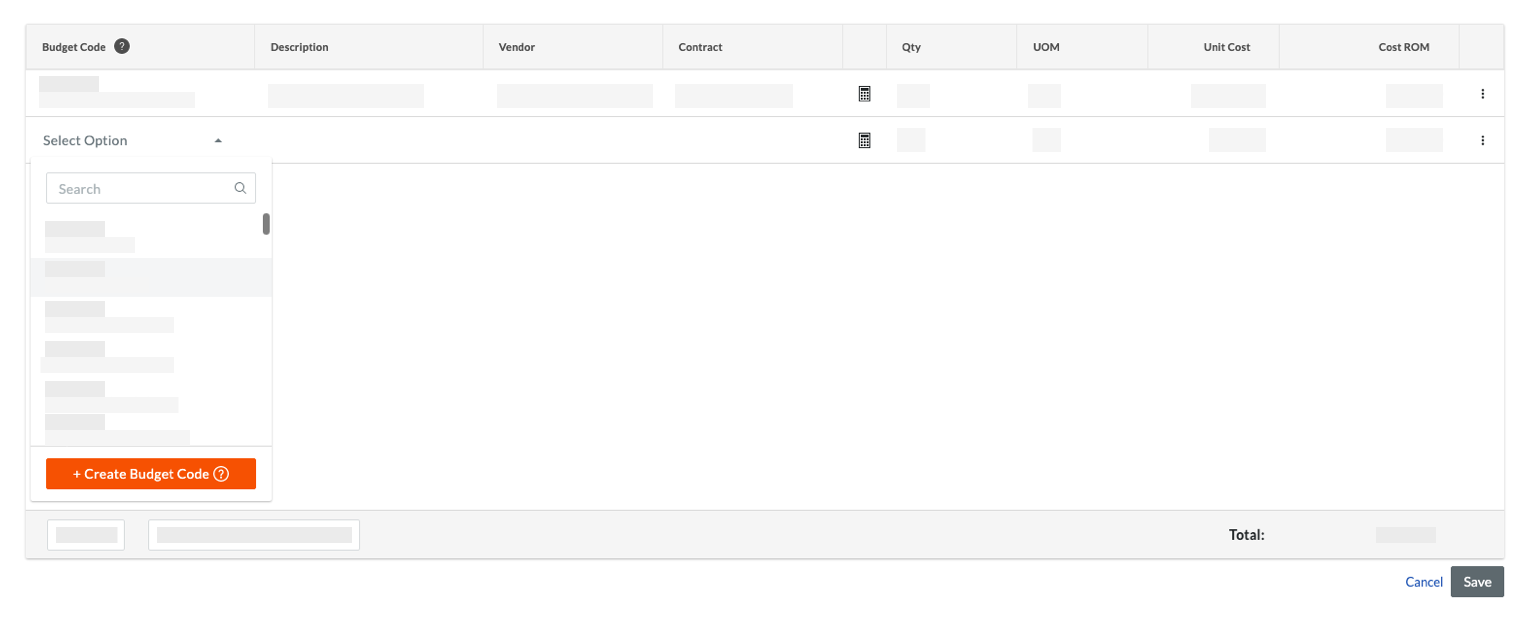(Legacy) Crear un evento de cambio
Objetivo
Crear un evento de cambio utilizando la herramienta Eventos de cambio del proyecto.
Contexto
En un proyecto de construcción, un evento de cambio es cualquier cambio que afecta al alcance original de un proyecto de construcción. Puede tratarse de cualquier acontecimiento que afecte al alcance del trabajo a realizar, provoque un cambio en el calendario del proyecto o genere costes inesperados. Permite a los miembros del equipo del proyecto y a las partes interesadas prepararse para un cambio de coste antes de que se convierta en un coste real.
Ejemplo 1: Creación de un evento de cambio para establecer una orden de cambio
Un evento de cambio puede provenir de muchas fuentes y es un evento que establece el proceso de orden de cambio. Algunos ejemplos incluyen:
- Atender una solicitud del promotor.
- Justificar un error de diseño.
- Solucionar un problema imprevisto causado por un documento o una especificación imprecisos.
Ejemplo 2: Crear un evento de cambio para documentar un cargo compensatorio
Un evento de cambio también se puede utilizar para documentar una condición del proyecto que produjo un cargo compensatorio. La intención de un cargo compensatorio es recuperar los gastos imprevistos incurridos al realizar acciones correctivas que una de las partes estaba obligada contractualmente a realizar.
Para asegurarse de que ha completado la documentación de las condiciones que activaron la facturación interna, puede crear un evento de cambio. La facturación interna se suele documentar de este modo en casos como los siguientes:
- Reparar algo dañado por el subcontratista.
- Limpieza de un área que el subcontratista estaba obligado a limpiar.
- Reemplazo de materiales defectuosos que ha proporcionado por el subcontratista.
- Volver a realizar una instalación que el subcontratista había efectuado incorrectamente.
- Abordar un problema descuidado para restaurar el cumplimiento de las normas de seguridad.
- Prever gastos imprevistos de alquiler y uso de maquinaria.
Con la herramienta Eventos de cambio de Procore, puede crear un evento de cambio para registrar el motivo de un cambio en un proyecto de construcción. Esta herramienta también sirve para informar a los miembros del equipo de proyecto y a las partes interesadas acerca de los costes potenciales derivados del evento de cambio. Una vez que se ha creado un evento de cambio, puede enviar una solicitud de oferta (Solicidudes de oferta) a sus subcontratistas. A continuación, los subcontratistas pueden responder a las Solicidudes de oferta (o un contratista principal puede introducir una respuesta a una Solicidudes de oferta en nombre del subcontratista). En la respuesta a la Solicidudes de oferta se incluye toda la documentación necesaria relativa al coste potencial del evento de cambio y el impacto en la planificación. Una vez revisadas las respuestas a la Solicidud de oferta del subcontratista, el equipo de proyecto dispone de la información que necesita para proseguir con la creación de una posible orden de cambio (POC).
Temas a considerar
- Permisos de usuario necesarios:
- Permisos de nivel "Estándar" o superior en la herramienta Eventos de cambio del proyecto.
Requisitos
Pasos
Crear un evento de cambio
- Vaya a la herramienta Eventos de cambio del proyecto.
- Haga clic en + Crear.

- En Información general, introduzca lo siguiente:
- Origen: Seleccione una de las herramientas del proyecto para vincular el elemento desde el que se originó el evento de cambio. Véase ¿Qué herramientas de Procore puedo utilizar para crear un evento de cambio?
- Change Event #: Procore asigna automáticamente números a los eventos de cambio en orden ascendente.
Nota
- El esquema de numeración predeterminado es 001, 002, 003, etc.
- Puede personalizar el esquema de numeración para los eventos de cambio del proyecto en cualquier momento sobrescribiendo el valor predeterminado con un esquema de numeración alfanumérico. Por ejemplo, CE001, CE1000, CE-1000, etc.
- Después de personalizar el esquema de numeración, Procore usa el nuevo esquema para asignar números a nuevos eventos de cambio.
- Título : Introduzca un título descriptivo para el evento de cambio.
- Estado. Seleccione un estado para el evento de cambio en la lista desplegable. Para conocer los estados predeterminados de Procore, consulte ¿Cuáles son los estados predeterminados de los eventos de cambio en Procore? El administrador de Procore también puede personalizar las opciones de esta lista. Consulte Personalizar los estados de evento de cambio.
- Alcance: Seleccione una de las opciones de ámbito disponibles en la lista: En el ámbito, Fuera del ámbito, o TBD. Véase ¿Cuáles son las opciones de alcance por defecto para los eventos de cambio en Procore?
- Tipo: Seleccione Por determinar, Asignación, Contingencia, Cambio de promotor o Transferencia para indicar el tipo de coste para el que se está preparando. Consulte Establecer las configuraciones predeterminadas de gestión de cambios.
- Motivo del cambio: Seleccione un motivo para el cambio en el menú desplegable. Consulte Establecer las configuraciones predeterminadas de gestión de cambios.
- Descripción: Describa el evento que puede dar lugar a un cambio en los costes.
- Archivos adjuntos: Adjunte cualquier archivo relevante.
- Contrato principal (para las estimaciones de recargo): Seleccione un contrato principal para indicar qué configuración de recargo del contrato principal debe utilizarse para calcular el recargo de los ROM. Este campo será por defecto el contrato principal con el número más bajo.
- Opcional: Si desea añadir partidas a su orden de cambio ahora, siga los pasos en Añadir partidas de eventos de cambio.
- Haga clic en Crear.
Añadir partidas de eventos de cambio
Nota: Si la combinación de subproyecto, código de coste y tipo de coste no está presupuestada, aparecerá una ventana emergente solicitando que confirme para añadir estas partidas al presupuesto. Si se selecciona Aceptar, estas partidas se añadirán directamente al presupuesto con un "?" junto a cada partida. Consulte Adición de una partida presupuestaria parcial.



